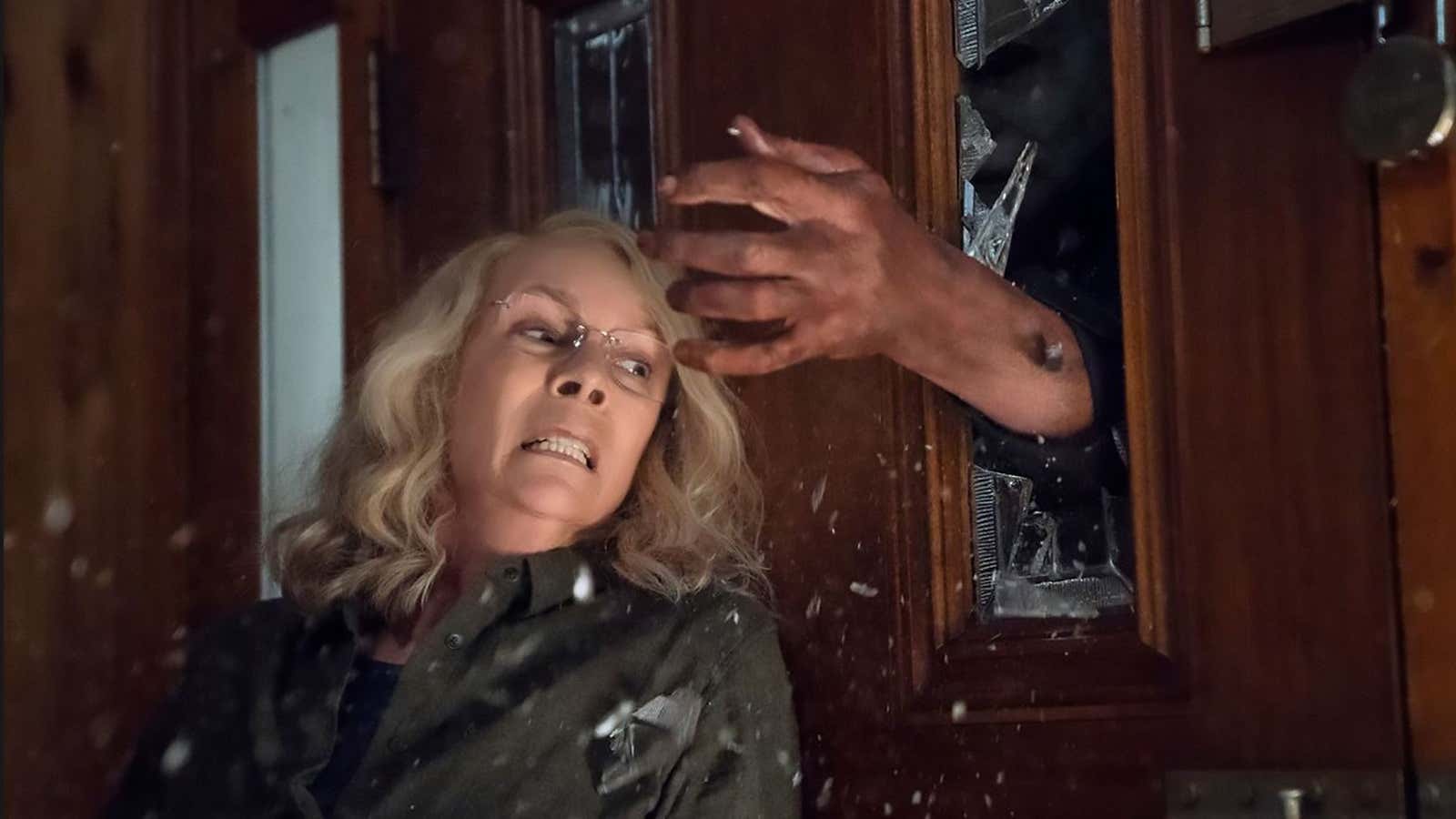When discussing how Halloween performed at the box office in its opening weekend, it might be easier to mention the records it didn’t break, instead of the ones that it did. There are quite a few.
The film opened to an enormous $77.5 million at the US box office this weekend—the biggest opening ever for a slasher film. It was also the second-biggest opening ever for an R-rated horror film, behind last year’s adaptation of Stephen King’s It, which earned $123 million but on a much larger budget.
More importantly, Halloween shattered any remaining notions that women cannot lead a financially successful horror movie. The film’s star, Jamie Lee Curtis, made sure that much was clear:
Here are some of Halloween‘s other impressive financial feats:
- best opening ever for a Blumhouse Productions film, easily surpassing Paranormal Activity 3 by $25 million
- second-best October opening ever (Venom set the record earlier this month)
- 10th-biggest opening for any R-rated film ever
- smashed analysts’ initial projections of $40 million to $50 million
A direct sequel to John Carpenter’s 1978 classic, Halloween stars Curtis reprising her role as Laurie Strode, who once again finds herself pitted against the masked killing machine known as Michael Myers. The film also stars Judy Greer and Andi Matichak as Strode’s daughter and granddaughter, respectively, who together confront the masked killer (again played by Nick Castle) one final time.
Horror has proven over and over that it’s one of Hollywood’s most bankable investments. In addition to taking advantage of the genre’s popularity with audiences, Halloween had the added benefit of capitalizing on nostalgia that older moviegoers have for the classic franchise. Horror films usually skew younger, but 60% of Halloween‘s opening weekend audience was 25 or older.
Horror has long been seen as a boys’ club, and one that tends to promote sexist tropes within its films. The original Halloween was accused of misogyny for depicting relentless violence against women—a common theme in slasher movies throughout their history. And yet, horror is still one of the best genres when it comes to equal representation for women.
Halloween is certainly not the first women-led horror movie to be a box office hit—The Exorcist is remains one of the most financially successful films ever, 45 years after its release. Alien, The Ring, and Hereditary are among a countless number of women-led horror films to succeed both critically and commercially. Any argument to the contrary has always been ridiculous, but Halloween‘s dominant weekend should finally put the idea to rest.
